Learn how to grow and care for the stunning Alocasia Frydek elephant ear plant, including soil, light, watering and humidity needs, plus design tips for displaying this showstopper.
If you’re looking to add a bold, eye-catching plant to your indoor garden, the Alocasia Frydek is an excellent choice. With its huge, vividly patterned leaves and easygoing care needs, it’s an ideal statement plant for any space. This variety of alocasia originates from the rainforests of Asia and does well as a houseplant when its tropical requirements are met. Keep reading for all the details on how to grow and care for this stunning “elephant ear” plant.
What is an Alocasia Frydek?
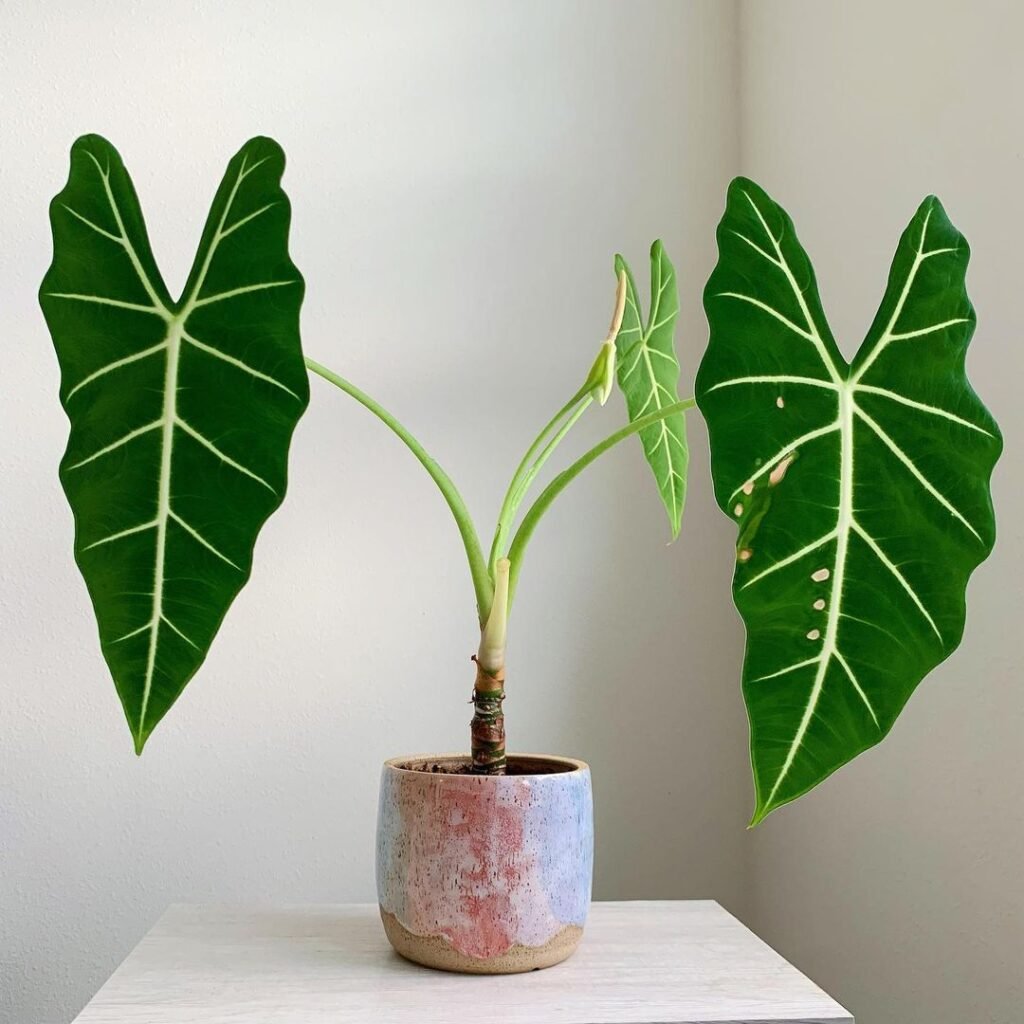
The Alocasia Frydek is a cultivar or hybrid variety of alocasia, which is a genus of plants in the aroid family. Also known as the Amazonica elephant ear due to its massive leaves, this plant is prized for its ornamental foliage.
Alocasias are closely related to anthuriums, philodendrons, and other popular aroids. Many varieties are grown for their large, attractively marked leaves emerging directly from the soil on long, succulent petioles (stems).
Frydeks produce some of the largest leaves of any alocasia variety. The thick, leathery green leaves can grow up to 3 feet long, with bold silvery-green veining and dark green margins. As the plant matures, the leaf undersides develop pretty purple-red coloration visible when new leaves unfurl.
When grown as a houseplant, Alocasia Frydek typically tops out around 4-6 feet tall from the soil line to the top of its tallest leaf stems. It has an upright, clump-forming growth habit and makes an impressive focal point for any room.
While the foliage is the star of the show, Frydeks will occasionally produce an unusual green and purple flower spike (spathe) during the warm season. But these tropical flowers are short-lived and not the main reason to grow this showy plant.
Requirements for Growing Alocasia Frydek
Like other alocasia plants, the Frydek variety requires warm, humid conditions similar to its native Southeast Asian rainforest environment to truly thrive. Providing the right growing medium, lighting, and environmental factors is key.
Soil and Planting
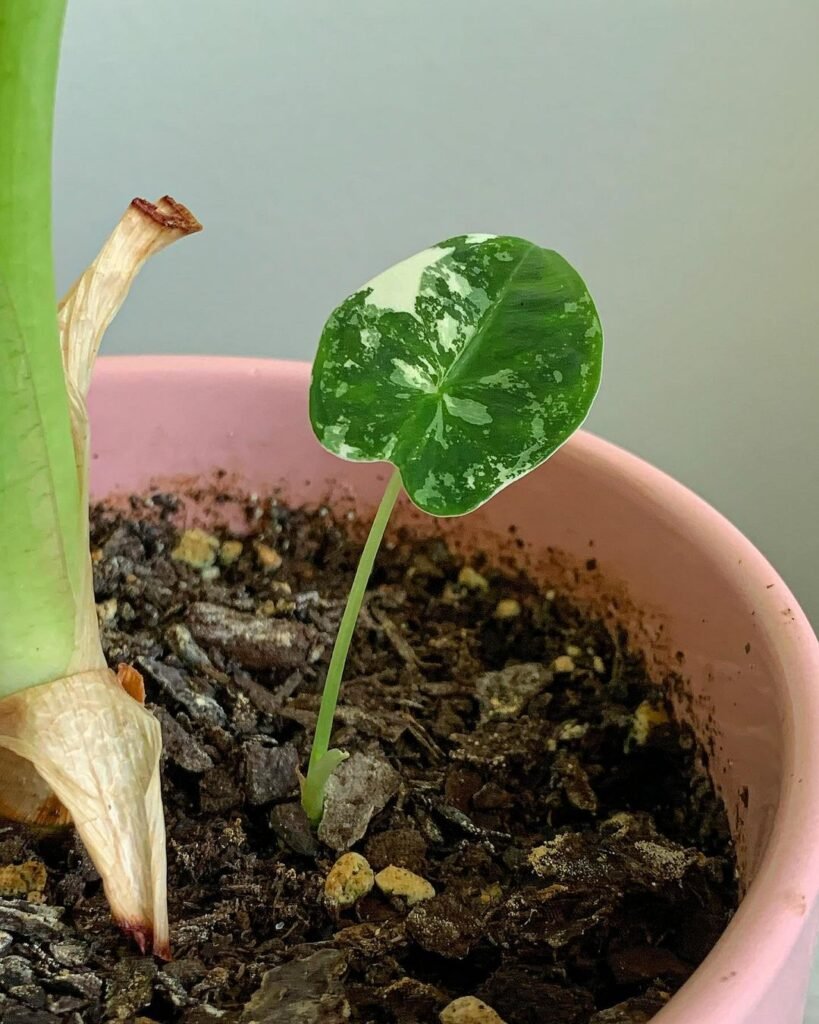
Alocasia Frydeks need a loose, well-draining potting mix formulated for aroids. A mixture of peat moss or coir, perlite, and bark chips works well, as does a high-quality succulent/cacti potting mix.
The potting mix should retain some moisture but drain freely to prevent soggy soil and root rot. Make sure any pot or container has ample drainage holes in the bottom.
When potting up your Frydek, use a container just slightly larger than the rootball (1-2 inches) to prevent the thick roots from becoming overcrowded. However, they don’t mind being somewhat root-bound.
Light Requirements
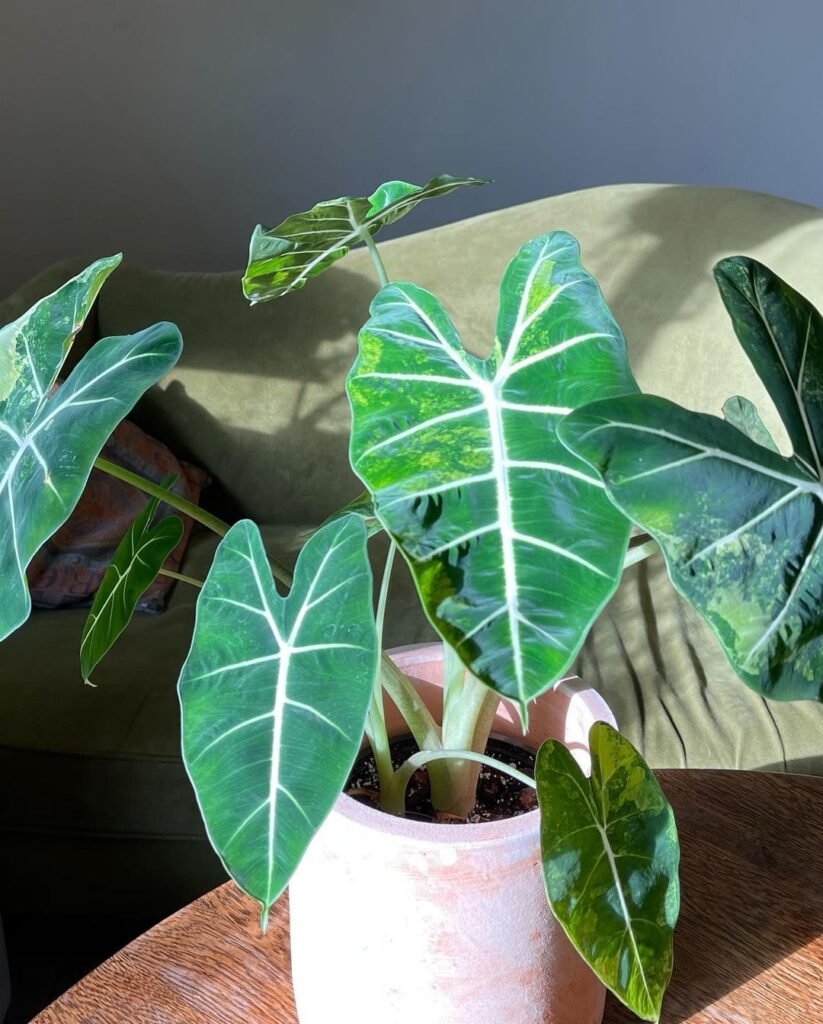
In their natural habitat, alocasia plants receive bright, filtered sunlight through the dense rainforest canopy. Indoors, that equates to bright, indirect light or partially shaded conditions.
An ideal spot is within 3-6 feet of an east or west-facing window where it gets 4+ hours of direct morning or late afternoon sun. Sheer curtains can help diffuse harsh direct rays.
Alocasias cannot tolerate direct, intense midday sun as it will scorch their delicate leaves. But they also require more light than many other houseplants to maintain their lush coloration and fullest growth potential.
Temperature and Humidity

Consistent warm temperatures between 65-85°F are a must for the Alocasia Frydek. Allow soil to cool below 60°F and the plant will go dormant and stop growing.
High humidity above 50% is also critical for healthy growth. These plants transpire a lot of moisture through their large leaf surfaces. Use pebble trays, humidifiers, or frequent misting to raise indoor humidity levels.
If conditions get too dry, leaf edges will brown and crisp up. Overly wet soil coupled with low humidity often leads to fungal issues or root rot.
Watering Needs
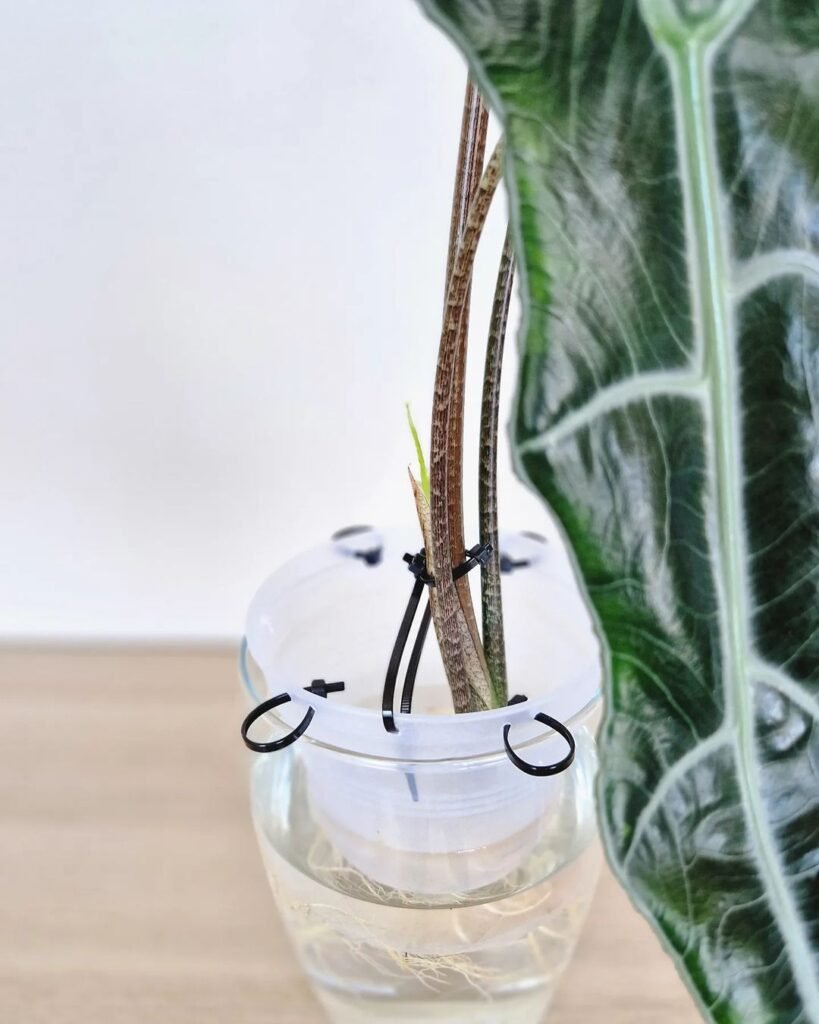
The goal for watering your alocasia is to keep the soil evenly moist but never saturated. Allow the top 1-2 inches to partially dry out between waterings, then water thoroughly.
Signs of underwatering include drooping, wilting leaves and severely dried out soil. Overwatering symptoms include yellowing lower leaves, soft mushy stems, and constantly wet soil.
During the active spring/summer growth period, you’ll likely need to water every 5-7 days. Cut back on watering in winter when growth naturally slows down.
Bottom-up watering by letting the plant absorb moisture through the drainage holes helps ensure even soil moisture while preventing wet leaves or crowns that can lead to rot.
Fertilizing
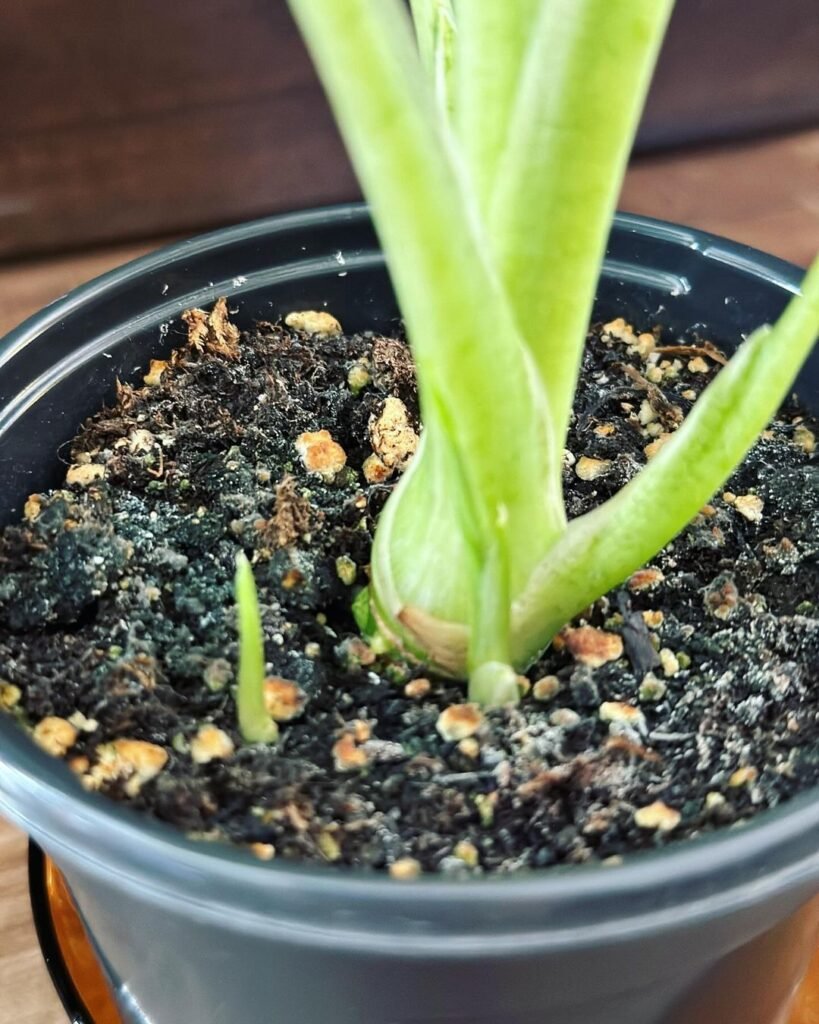
Feed your alocasia every 4-6 weeks during the warm spring through early fall season using a balanced liquid fertilizer diluted by half. Look for fertilizers formulated for tropicals or blooming houseplants.
You can also top dress with a slow-release pellet fertilizer for a more continuous nutrient supply. Avoid fertilizing during the winter dormant months.
Excessive fertilizer leads to chemical salt buildup in the soil, which can burn roots and leaves. Always follow product instructions carefully.
Pruning and Grooming

Old or damaged leaves can simply be cut off near the base using sterile pruners or scissors. New growth will continually emerge from the crown and roots.
Remove any yellowing lower leaves as soon as they appear to improve air circulation. You can also prune off the odd flower spike if desired.
During their winter dormancy, feel free to remove any dead, dying leaves for aesthetic purposes. But avoid heavy pruning that would remove all growth.
Wipe the large leaves with a damp cloth periodically to remove dust and debris. Keeping the leaves clean allows them to photosynthesize more efficiently.
While not absolutely necessary, you may wish to rotate your Alocasia Frydek by a quarter turn every few months to ensure the growth remains upright and full on all sides.
Potential Problems with Alocasia Frydek
These striking elephant ear plants are generally easygoing when provided warm temperatures, high humidity levels, and proper care. However, there are some common issues to watch for:
Leaf Problems

- Crispy, brown leaf tips or edges indicate low humidity
- Yellow leaves can signal overwatering, nutrient deficiencies, or old age
- Dark spots or blotches may be a fungal infection like leaf spot disease
Crown and Root Problems

- Soft, mushy crown or stems is a sign of bacterial soft rot
- Dark, firm crowns or stems could indicate a fungal crown rot
- Stunted growth even with ideal care often means the roots are too crowded
Pests
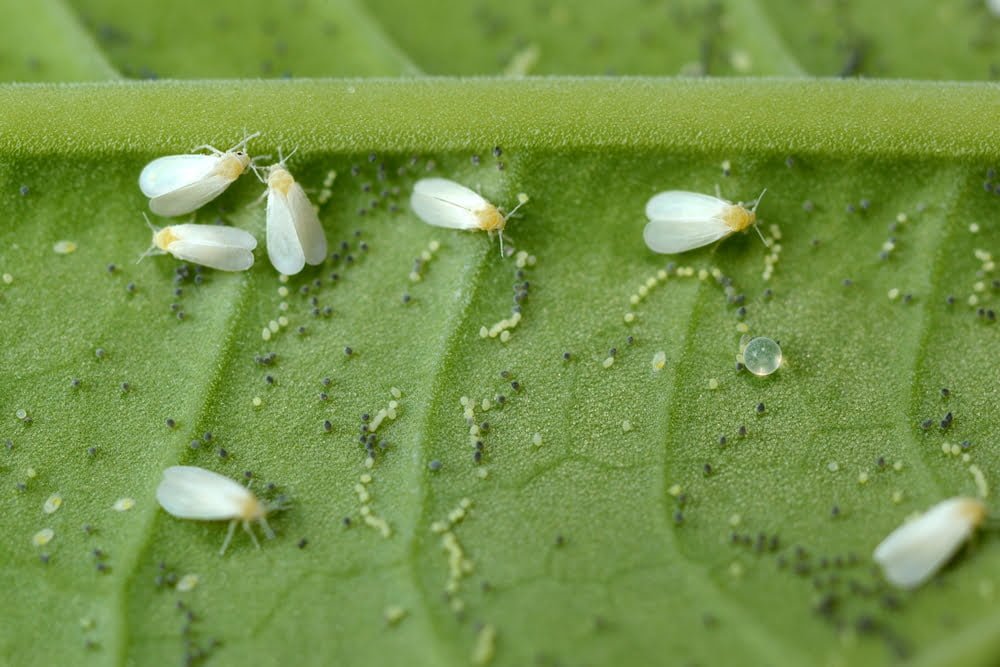
- Sap-sucking insects like spider mites or mealybugs
- Fungus gnats if the soil stays wet for too long
- Treat with insecticidal soap, neem oil or other houseplant-safe pesticides
The best way to avoid issues is to provide a warm, humid environment with the proper amount of moisture and nutrients. Allowing soil to dry out even slightly between waterings is crucial.
Rotate different areas of your alocasia into better light each year and repot every 2-3 years in fresh potting mix to reinvigorate growth.
Design Tips for Using Alocasia Frydek
When placed in the right indoor setting, the bold foliage of the Alocasia Frydek is guaranteed to turn heads and become the focal point in any room. Here are some popular ways to display this showstopping plant:
Floor Plant
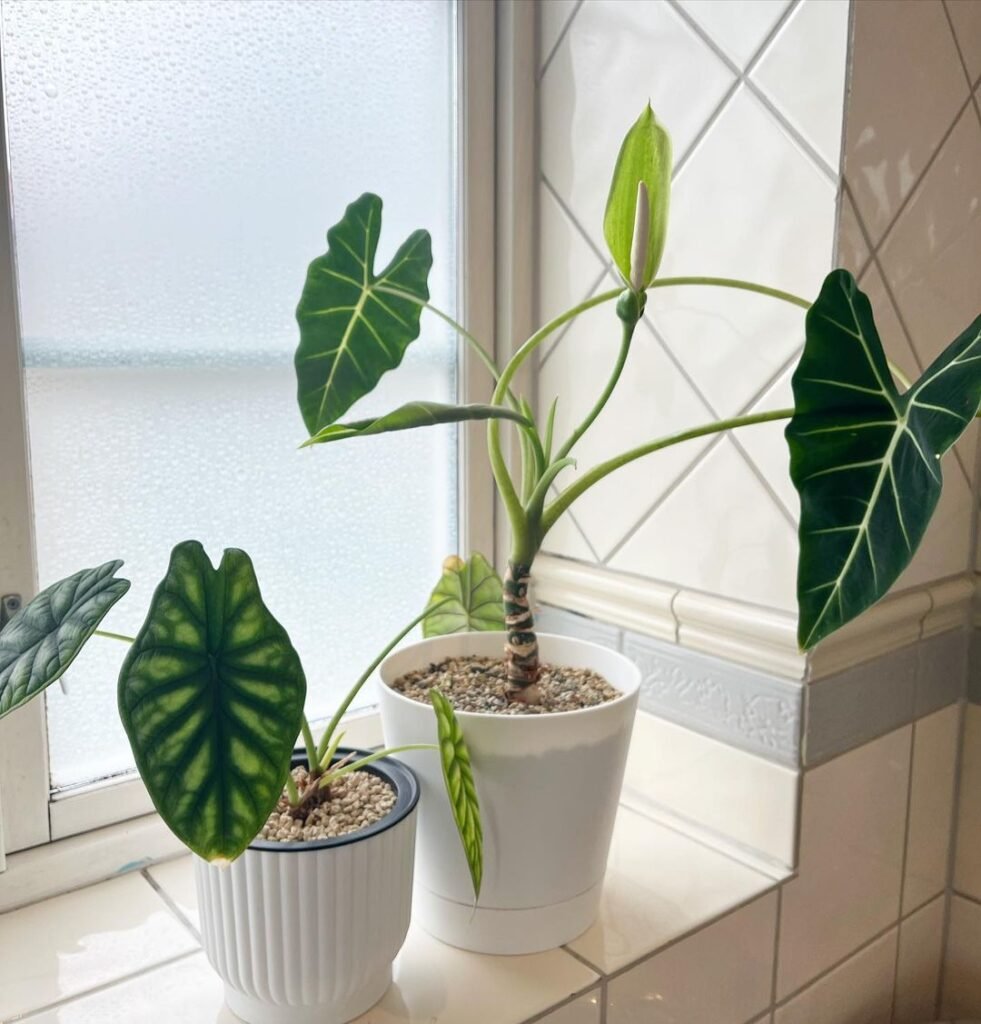
The large size and upright growth habit of the Alocasia Frydek makes it perfect for using as a floor plant in bright rooms or open spaces. Place a single, mature specimen in a decorative planter or pot as a stunning accent piece.
You can also create an eye-catching tropical vignette by grouping three or five Frydeks together of differing heights in one larger planter box.
Just be sure to situate floor plants several feet away from any heating vents, drafts or bright southern exposure windows to protect the leaves.
Mixed Planter
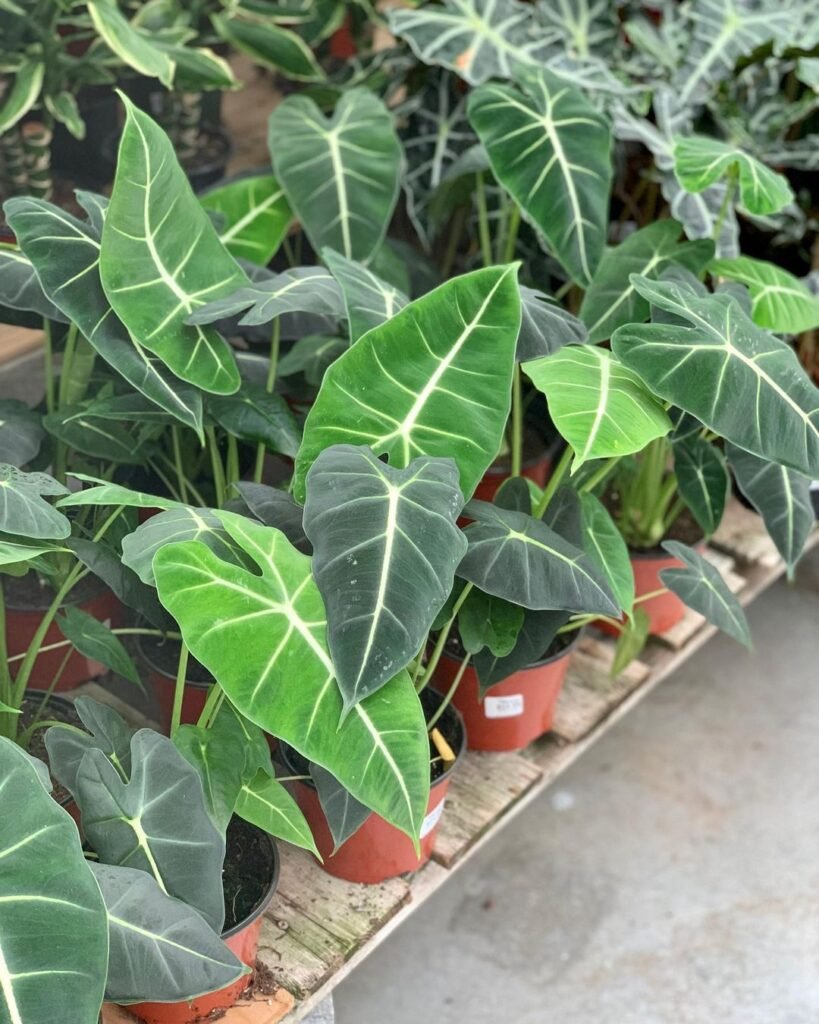
Frydeks combine beautifully with other tropical foliage plants in mixed planter arrangements. The large alocasia leaves provide height and contrast against shorter aroids, ferns, bromiliads or flowering plants in the understory.
Group your Frydek with complementary leaf textures, colors and growth habits. Consider pairing it with a trailing pothos or philodendron, along with shorter dracaena, calathea or begonia varieties.
Just be sure all plants have similar environmental needs in terms of light exposure, soil moisture, and humidity levels.
Garden Centerpiece
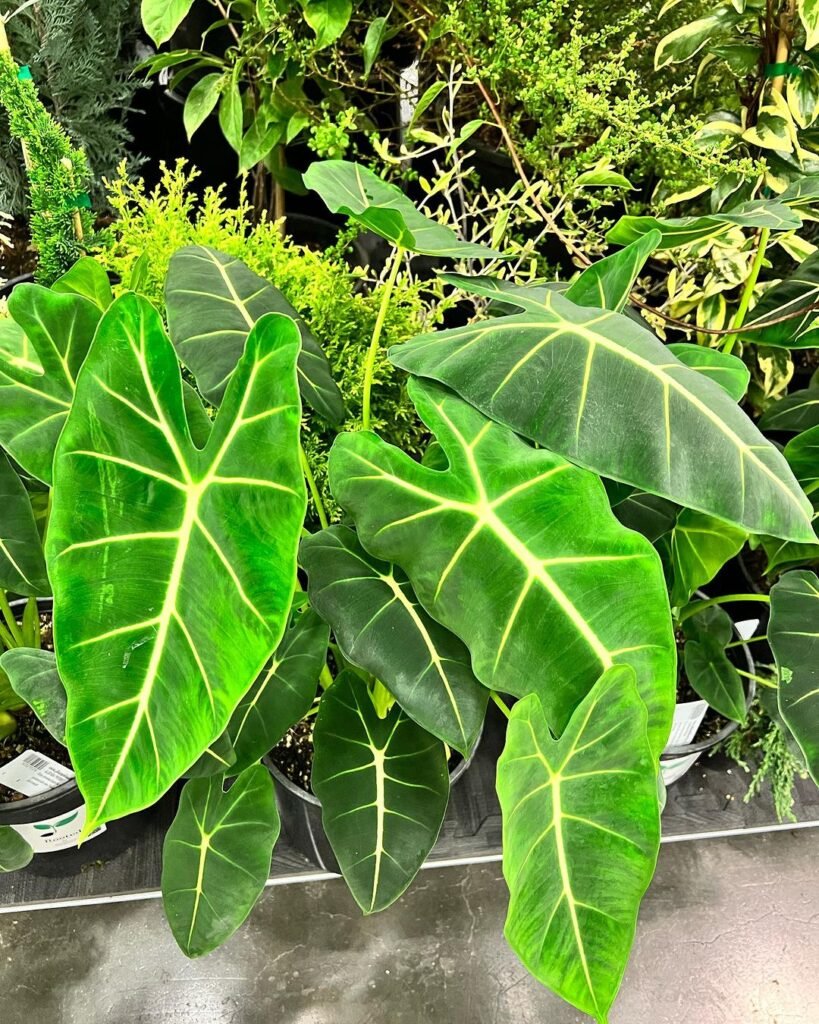
If you’re lucky enough to live in a warm, humid climate like USDA zones 9b-11, you can grow Alocasia Frydek outdoors as a showstopping garden centerpiece.
Plant it front and center as a focal point in mixed tropical beds or borders. The gigantic leaves will bring unmatched ornamental value and a taste of the exotic to your landscape.
For the biggest impact, dig a hole and set the entire nursery pot into the ground, allowing the alocasia to grow contained. That way it’s easy to move indoors if temperatures threaten to dip below 60°F.
Indoor Greenhouse With some supplemental heating and humidity, you can even grow Frydeks in an indoor greenhouse or sunroom environment year-round in cooler climates.
Just be sure to provide very bright, filtered light, consistently warm temperatures above 65°F, and maintain humidity levels of 50% or higher.
Running a humidifier, clustering plants closely together, and having proper air circulation will all help maintain lush growth.
No matter how you decide to feature the Alocasia Frydek plant, its enormous, eye-catching leaves and easygoing care requirements are sure to make it a focal point in any space.
With proper warm temperatures, ample humidity, ideal soil conditions and bright, indirect lighting, you’ll be rewarded with a long-lasting, showy display of tropical foliage.